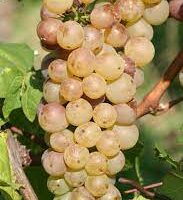RIESLING AND AUXERROIS IN LUXEMBOURG
In the picturesque landscapes of the Moselle Valley, where the River Moselle serenely winds its way through verdant hills and sloping vineyards, the Grand Duchy of Luxembourg crafts wines that are a testimony to its rich viticultural heritage. While many grape varieties contribute to Luxembourg’s enological prowess, two varieties—Riesling and Auxerrois—hold special prominence. This essay delves into the distinctive characteristics, history, and significance of these two varieties in Luxembourg’s wine narrative.
RIESLING AND AUXERROIS IN LUXEMBOURG
In the picturesque landscapes of the Moselle Valley, where the River Moselle serenely winds its way through verdant hills and sloping vineyards, the Grand Duchy of Luxembourg crafts wines that are a testimony to its rich viticultural heritage. While many grape varieties contribute to Luxembourg’s enological prowess, two varieties—Riesling and Auxerrois—hold special prominence. This essay delves into the distinctive characteristics, history, and significance of these two varieties in Luxembourg’s wine narrative.
History: Luxembourg’s history is deeply intertwined with its neighbors. It was under the dominion of various powers, including the Spanish, French, and Austrians before gaining its independence in the 19th century. The 1867 Treaty of London recognized its perpetual neutrality, though this was violated in both World Wars when German forces occupied the country. After World War II, Luxembourg became one of the founding members of the North Atlantic Treaty Organization (NATO) and the European Union (EU), solidifying its commitment to peace, cooperation, and economic development in the continent.
People: The Luxembourgers, as they are known, are proud of their multicultural heritage, owing to the country’s strategic position in Europe. While the native language is Luxembourgish, most citizens also speak French and German. This trilingual proficiency reflects not just their historical ties but also their inclusive approach to integrating foreigners, making Luxembourg a true melting pot of cultures.
Geology and Geography: Despite being one of the smallest countries in Europe, Luxembourg boasts varied landscapes due to its geology. It is divided into two regions: the Oesling in the north and the Gutland in the south. The Oesling forms part of the Ardennes, characterized by rolling hills and forests. The Gutland, on the other hand, is flatter and more conducive for agriculture and human settlement.
The country’s topography is marked by a series of plateaus, interspersed with scenic river valleys, primarily those of the Alzette and Pétrusse rivers. Luxembourg City, the capital, sits dramatically atop cliffs that overlook these river gorges, lending it a unique and picturesquegeography.
Wines: Luxembourg’s winemaking history dates back to Roman times. The country’s location in the Moselle Valley provides an ideal climate and terroir for viticulture. White wines, made primarily from grapes like Riesling, Pinot Gris, and Auxerrois, dominate the production. The Crémant de Luxembourg, a sparkling wine made using the traditional method, is especially prized and stands as a testament to the country’s viticultural prowess.
Food: Luxembourg’s gastronomy reflects its geographical position and historical influences. Traditional dishes include ‘Judd mat Gaardebounen’, a smoked pork neck served with broad beans, and ‘Gromperekichelcher’, a spiced potato cake that’s deep-fried till crispy. French, German, and Belgian influences are evident, be it in the form of pastries, stews, or beers. The country’s commitment to gastronomic excellence is evident in its surprisingly high number of Michelin-starred restaurants per capita.

RIESLING: THE MOSELLE VALLEY’S STAR
History and Origin: The origins of Riesling are traced back to the Rhine region of Germany. However, for centuries, the Moselle Valley, which Luxembourg shares with Germany, has been a nurturing ground for this noble grape. The intertwining history and shared terroir of the region have meant that Riesling’s journey in Luxembourg is as profound as in its German counterparts.
Characteristics: In the unique terroir of Luxembourg, Riesling expresses itself in multifaceted ways. The grape is known for its ability to reflect the nuances of the land, and in Luxembourg, this results in wines that are typically dry with high acidity. Aromatically, Luxembourg Rieslings present a kaleidoscope of flavors ranging from green apple, lime, and citrus to sometimes more evolved notes of petrol or flint in aged bottles.
Significance: Riesling holds a prestigious position in Luxembourg’s wine industry. Its capacity to produce wines with excellent aging potential makes it a favorite among wine connoisseurs. The mineral-rich soils of Luxembourg, especially its marly and limestone compositions, provide Riesling with a unique character that sets it apart from Rieslings of other regions.

AUXERROIS: THE UNDERSTATED GEM
History and Origin: Auxerrois, believed to have originated in the Alsace region of France, has found a harmonious fit in the terroirs of Luxembourg. It has been cultivated for several decades, gradually becoming one of the mainstays of Luxembourg’s wine production.
Characteristics: Auxerrois wines from Luxembourg are known for their approachable, soft nature. They have a pleasant aromatic profile that often encompasses white fruits, citrus, and a touch of floral notes. The wines typically have moderate acidity, which lends them a round and easy-drinking quality.
Significance: While Riesling often captures the limelight, Auxerrois plays a vital role in broadening Luxembourg’s wine portfolio. Its versatility makes it an excellent choice for still wines, crémants (sparkling wines), and blends. In fact, Luxembourg’s Crémant, a sparkling wine that has gained international acclaim, often uses Auxerrois as a dominant or blending grape, showcasing its adaptability and significance.
WINERIES




